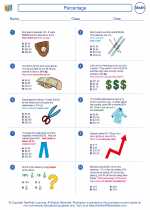Percentage
Percentage is a way of expressing a number as a fraction of 100. It is often used to compare quantities and to express proportions.
Calculating Percentage
To calculate the percentage of a number, you can use the following formula:
Percentage = (Part/Total) * 100
For example, if you want to find 25% of 80, you would use the formula:
Percentage = (25/100) * 80 = 0.25 * 80 = 20
Converting Percentage to Decimal and Fraction
To convert a percentage to a decimal, you can simply divide the percentage by 100. For example, 25% as a decimal would be 0.25.
To convert a percentage to a fraction, you can write the percentage as a fraction with a denominator of 100, and then simplify if possible. For example, 25% as a fraction would be 25/100, which simplifies to 1/4.
Applications of Percentage
Percentages are used in many real-life situations, such as calculating discounts, expressing interest rates, and understanding proportions in data analysis.
Study Guide
Here are some key points to remember when working with percentages:
- Percentage is a way of expressing a number as a fraction of 100.
- To calculate a percentage, use the formula: Percentage = (Part/Total) * 100
- To convert a percentage to a decimal, divide by 100.
- To convert a percentage to a fraction, write the percentage as a fraction with a denominator of 100 and simplify if possible.
- Percentages are used in various real-life applications such as discounts, interest rates, and data analysis.
Practice calculating percentages and converting between percentages, decimals, and fractions to strengthen your understanding of this topic.
[Percentage] Related Worksheets and Study Guides:
.◂Math Worksheets and Study Guides Sixth Grade. Percentage
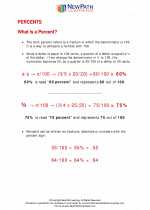
 Activity Lesson
Activity Lesson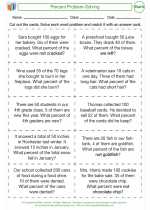
 Worksheet/Answer key
Worksheet/Answer key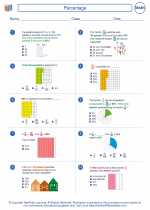
 Worksheet/Answer key
Worksheet/Answer key
 Worksheet/Answer key
Worksheet/Answer key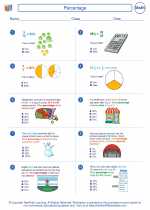
 Worksheet/Answer key
Worksheet/Answer key
 Worksheet/Answer key
Worksheet/Answer key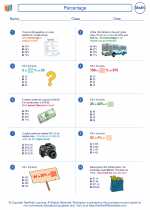
 Worksheet/Answer key
Worksheet/Answer key